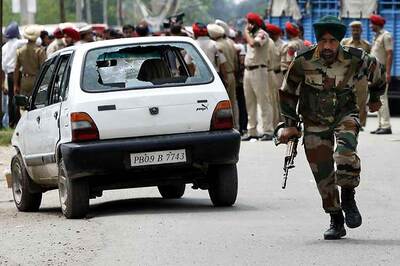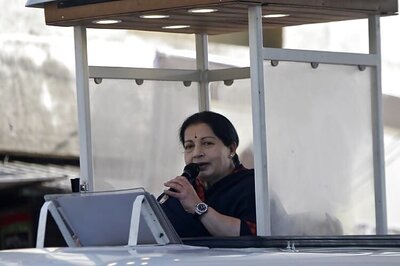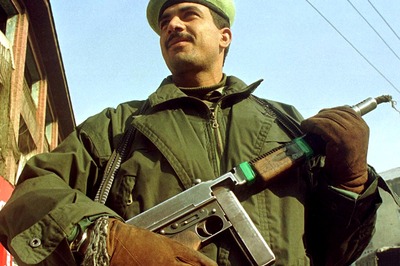
views
New Delhi: As India registers a surge in cases of COVID-19, authorities at the Centre and states are focussed on nipping cluster transmissions of the novel coronavirus in the bud to prevent them from turning into community transmissions. But what are cluster transmissions? Where have they been found in the country so far? And how are authorities trying to ensure that the spread of the disease is minimised? We try to answer these questions.
What does cluster transmission mean?
The World Health Organization (WHO) does not have a specific definition for cluster transmissions. Though it has used this term to denote the size of infections, in official parlance it has used other terms such as imported cases, local transmission and community transmission. Cluster transmission has been used by Indian authorities to identify infections that are largely concentrated in a limited locality, often within a family and its extended circle.
A scientist from the Indian Council of Medical Research explained, “If one man from a family has travelled abroad and he transmits the infection to other family members or his extended family, it can be characterised as a cluster of infections. In such cases, the source of the infection is known and can be traced back even if someone outside the family has tested positive.”
According to the WHO , “Community transmission is evidenced by the inability to relate confirmed cases through chains of transmission for a large number of cases, or by increasing positive tests through sentinel samples (routine systematic testing of respiratory samples from established laboratories)." Further, it defines local transmission as ones where source of infection is within the reporting location.
When WHO’s director-general Tedros Adhanom Ghebreyesus announced that COVID-19 was a global pandemic, he said, “If countries detect, test, treat, isolate, trace, and mobilise their people in the response, those with a handful of COVID-19 cases can prevent those cases becoming clusters, and those clusters becoming community transmission.”
Have we seen cases of cluster transmission in India?
Yes. The case of Delhi’s index patient who returned from Italy, the Pathanamthitta cases in Kerala, the Kerala couple who evaded screening at airport, the Bhilwara hospital case and the case of Telangana DSP’s son can be characterised as cluster transmissions. These transmissions are either concentrated in one specific geographic area or linked to the movement of a symptomatic person which led to infections among others.
Let’s take the instance of the case in Pathanamthitta. A family of three — husband, wife and their 24-year-old son — had returned from Italy on February 29. The family from Ranni, Pathanamthitta, did not make a proper disclosure of their foreign travel during screening at Kochi airport. They were received at the airport by their son-in-law and daughter. Later, they met their elderly parents in Pathanamthitta and four other relatives, two of whom were from Kottayam.
All eight members of the family who came in contact with the family of three who had returned from Italy tested positive for COVID-19. All of the family members were put in isolation wards.
However, before they tested positive, the family of three had also been to some public places, according to the Kerala government. Authorities had to trace the route map of the places they visited in the correct chronology. The route map was then published on public platforms and an appeal was made to people in Pathanamthitta to contact the state helpline if they were present at the places visited by the family who had returned from Italy.
Officials from the Kerala health department said that many came forward to report their presence and, fortunately, people have not tested positive due to intense surveillance around the homes the family visited.
What measures do state governments adopt to contain cluster transmissions?
The state governments follow micro-plans to contain the spread of the virus to a larger group of people. This plan comprises identifying a containment zone which has to be decided on the basis of contacts that have been traced of the people who tested positive and the extent of the contacts. If the contact tracing is taking more than a day’s time, an area of 3km radius around the residence of the positive cases has to be demarcated. Additionally, a buffer zone of 5km radius and 7km in the case of rural areas is identified for cluster containment plan.
In an ideal situation, the ASHA health workers and auxiliary nurse midwife health workers have to visit houses in the containment zone and they have to search for clinically suspect cases, contacts have to be identified and general awareness has to be spread on prevention of the infection, home quarantine and common symptoms.




















Comments
0 comment